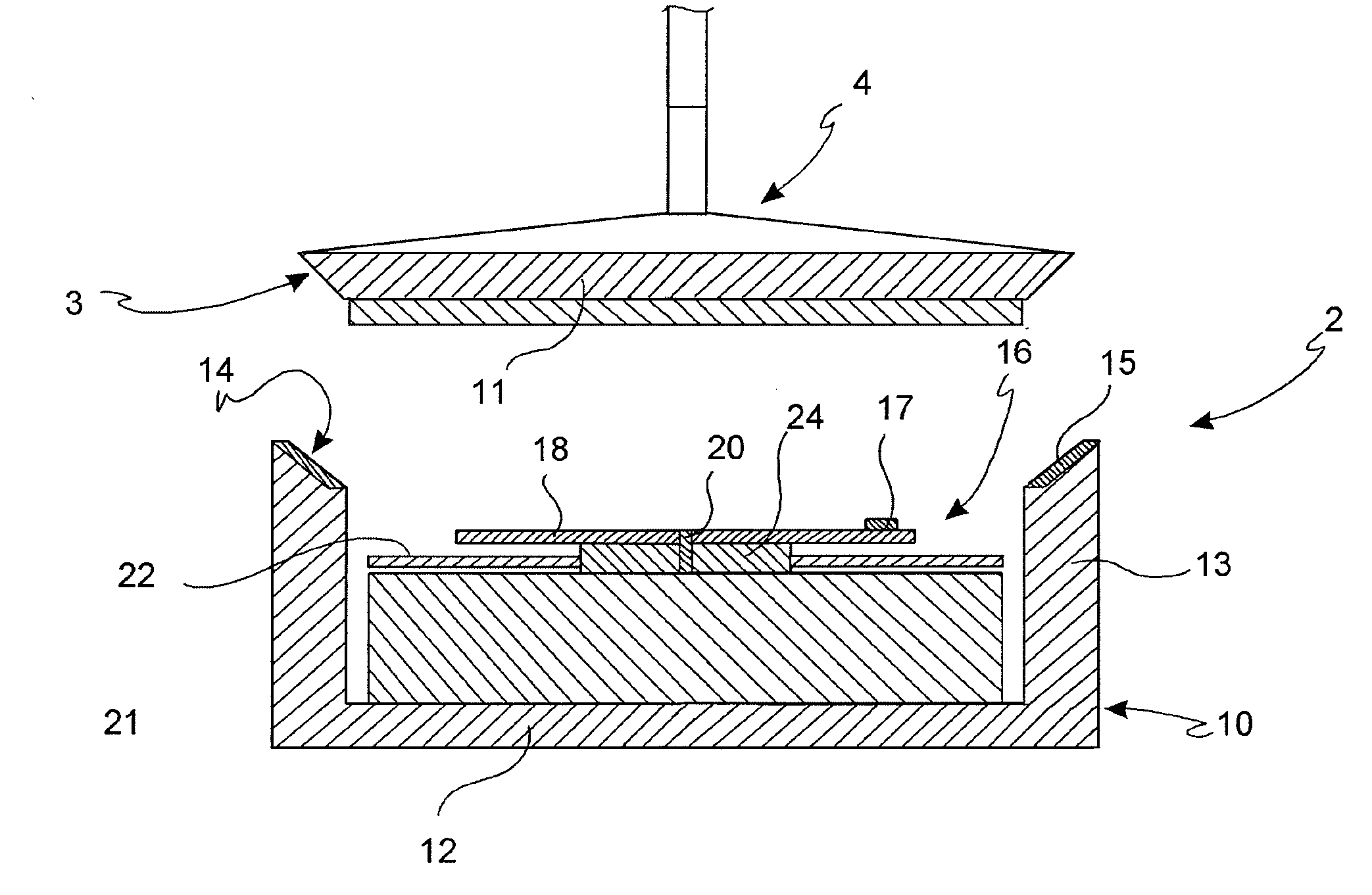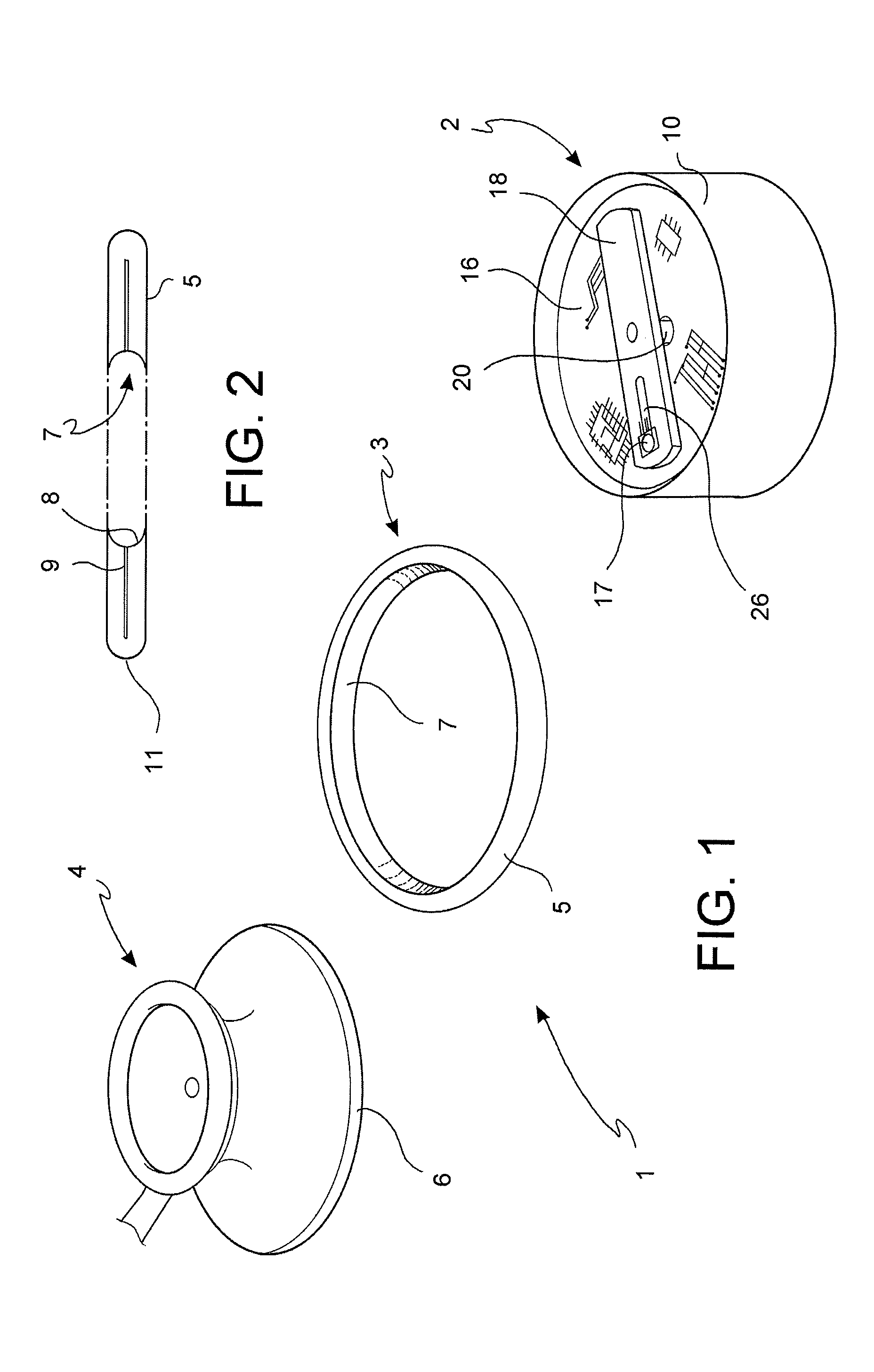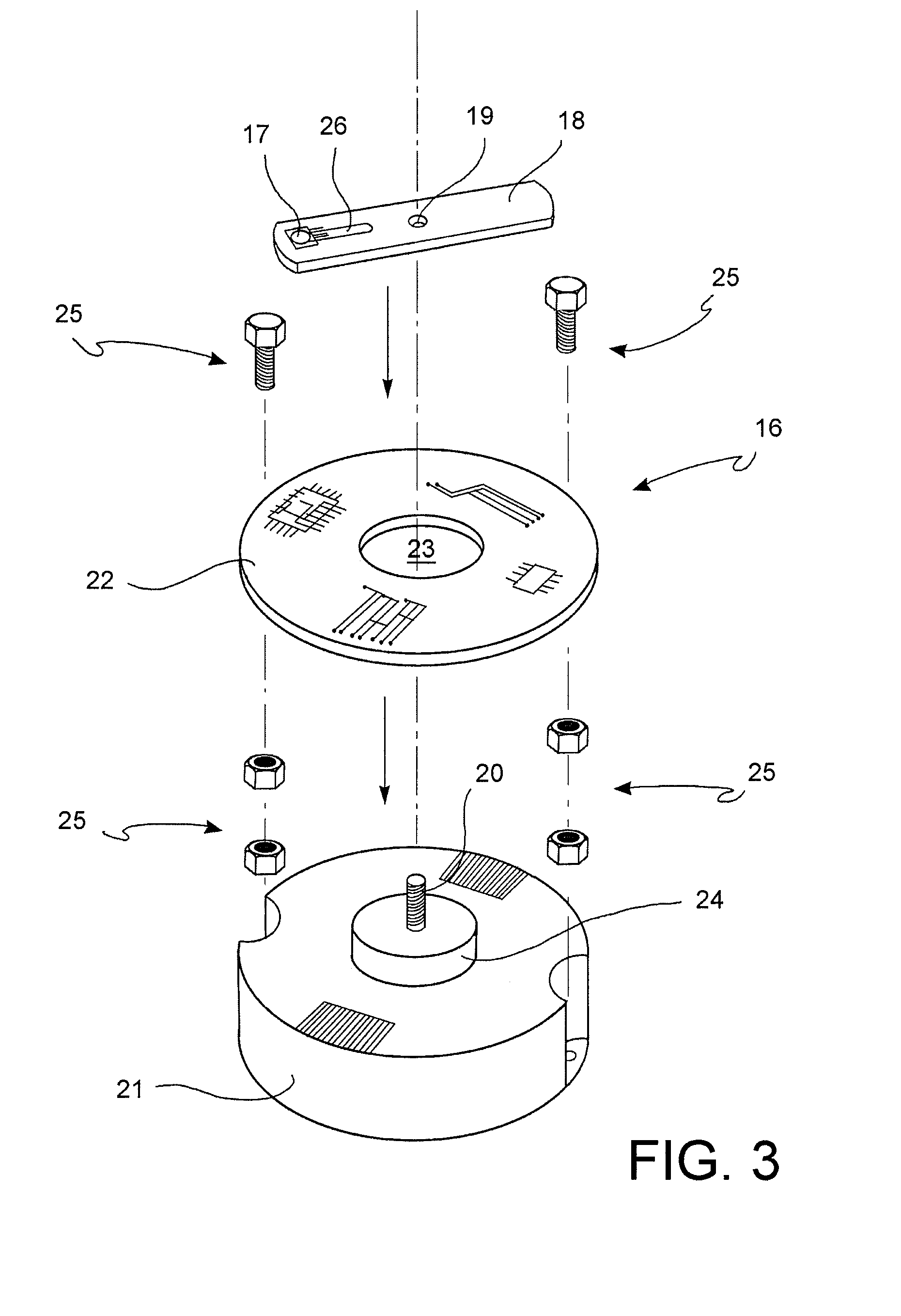Device for the hygienisation of medical instruments
a technology for medical instruments and sterilisation, applied in the field of stethoscopes, can solve the problems of increasing clinical and health costs, affecting the health of patients, and often entail serious health risks, and achieve the effect of simple, effective and safe us
- Summary
- Abstract
- Description
- Claims
- Application Information
AI Technical Summary
Benefits of technology
Problems solved by technology
Method used
Image
Examples
Embodiment Construction
[0025]The term “medical-healthcare instrument” indicates a non-disposable instrument having a surface destined to come into contact with the body of a person, both for medical-healthcare reasons, as happens with the instruments normally used by doctors and nurses, or for personal reasons, such as for examples babies' dummies or other objects used for infants.
[0026]With reference to the figures, reference numeral 1 globally denotes the hygienisation or sterilisation system according to the invention which comprises a hygienisation or sterilisation device 2 and a coupling member 3 to a medical-healthcare instrument, in the case in point a stethoscope 4.
[0027]The coupling member 3, a cross-section of which is shown in FIG. 2, comprises an elastic ring 5, coupling to the rim 6 of the head of the stethoscope 4, and adaptable, thanks to the elasticity of the material, to the various dimensions and shapes (circular, elliptical, etc.) of the stethoscope. The elastic ring 5 is typically made...
PUM
| Property | Measurement | Unit |
|---|---|---|
| wavelength ranging | aaaaa | aaaaa |
| wavelength ranging | aaaaa | aaaaa |
| wavelength ranging | aaaaa | aaaaa |
Abstract
Description
Claims
Application Information
 Login to View More
Login to View More - R&D
- Intellectual Property
- Life Sciences
- Materials
- Tech Scout
- Unparalleled Data Quality
- Higher Quality Content
- 60% Fewer Hallucinations
Browse by: Latest US Patents, China's latest patents, Technical Efficacy Thesaurus, Application Domain, Technology Topic, Popular Technical Reports.
© 2025 PatSnap. All rights reserved.Legal|Privacy policy|Modern Slavery Act Transparency Statement|Sitemap|About US| Contact US: help@patsnap.com



